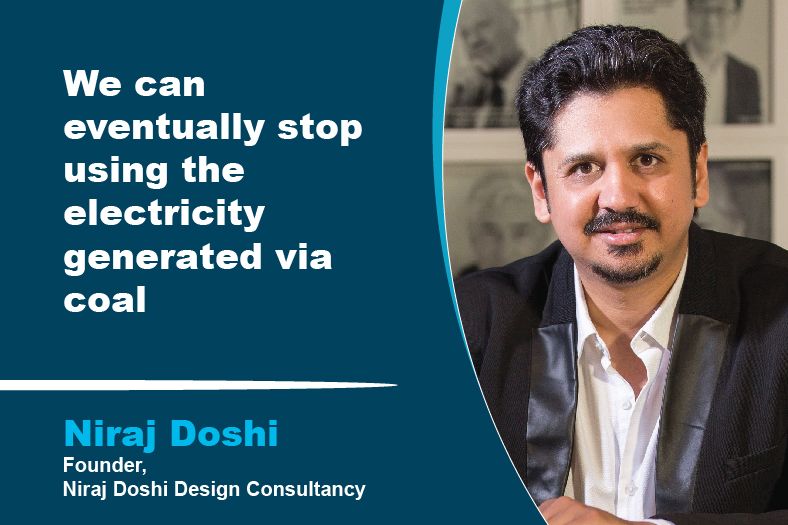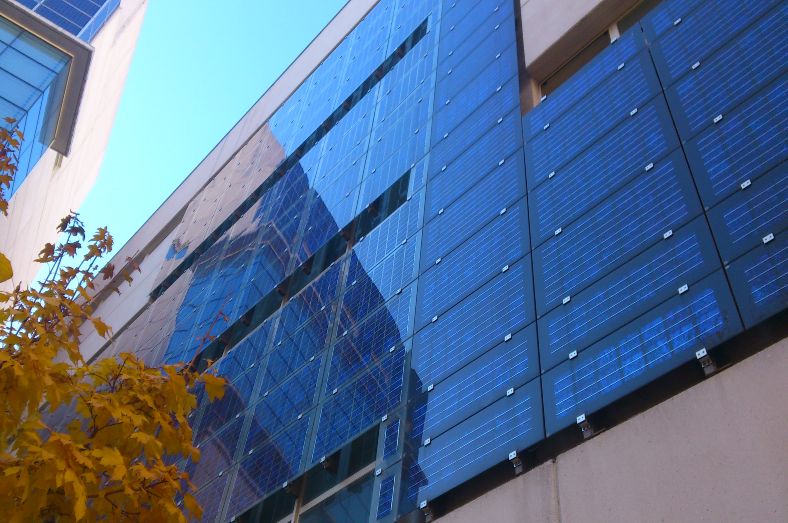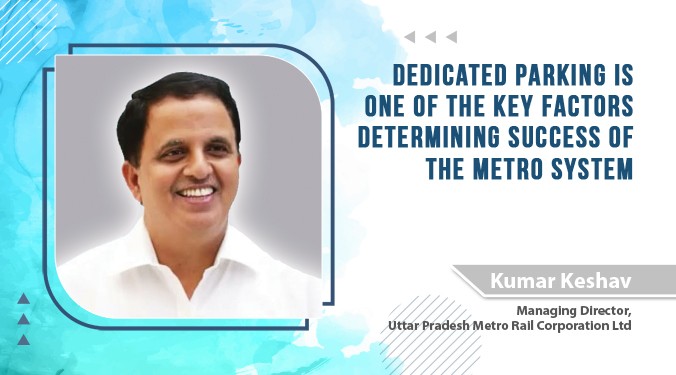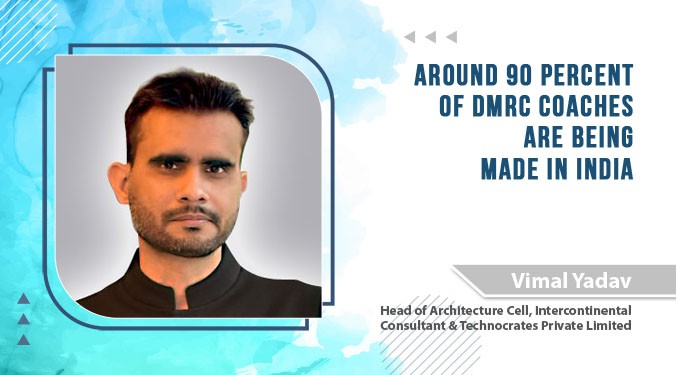We can eventually stop using the electricity generated via coal

The energy generation cost from solar panels is almost equal to the cost of electricity generated by coal, so we have a golden opportunity to switch to solar completely says Niraj Doshi, Founder, Niraj Doshi Design Consultancy.
What kind of design makes it easy to tap solar power in homes and buildings?
Solar Panel innovation is making a huge change in energy creation throughout our planet. Nowadays, it has also fabulously started integrating itself into the field of architecture. With this evolution in the field of solar energy, the energy generation cost from solar panels is almost equal to the cost of electricity generated by coal. So, we are heading towards a future where we can eventually stop using the electricity generated via coal and switch to solar panels.
As a design firm we prefer high-rise towers with large landscaped areas as a general typology in the urban context. Then, we mount the solar panels at an angle of approximately 20°-22° facing the south. We have moved towards G+5 Structures with larger terrace areas that are planned as recreational spaces and are semi-covered with solar panels. Hence maximum surface area is given to these systems, creating as much energy as possible for that structure/building. But, with the further innovation of the solar panels like those integrated into the windows, we may go back to the typology of high-rise towers, because all the surfaces of the façade of the building would be generating solar energy effectively forming new typologies in the field of architecture.

Rainscreen cladding vs curtain walling systems, what kind of arrangement is better for solar PV facades?
When we talk about rainscreen cladding vs curtain walling systems, rainscreen cladding is only used where there is heavy rainfall like that in the rainforests, coastal regions, etc. as it is very particularly connected to the geographical properties. Curtain walling systems are extensively used because it creates an air-gap between the Internal façade of the building & the cladding system itself. This allows air flow in-between and thus effectively creating a thermal gap, providing a good insulation during the summers and winters as well. We believe solar cells could be integrated in both these cladding systems efficiently. So, we are really excited to see the new products coming into the market which will show their multipurpose utility..
What is the advantage offered by transparent Solar PV facade in terms of heat gain and light gain? Likewise, do you feel solar windows are going to redefine the future?
For colder weathers solar cells integrated with glass would be a boon because they capture a large amount of sunlight and along with it comes the heat as well. In hotter climates the solar panels are obviously on the southern side because of the large amount of sunlight coming in from that direction. We can still use the age-old technologies, like that of Rajasthan where they use two screens with a balcony in between. The solar panel cells are on the exterior screen with a well-ventilated balcony in between and then comes the glazing system on the internal screen. This type of system allows solar electricity generation along with ventilated spaces.

Is rooftop solar feasible for high-rises when the area of the terrace vs the number of housing units are not proportional to each other? How can this issue be addressed?
In the high-rise category the terrace area is quite small and with the roof top services in place there is not much of an area left for fixing the solar panels. So, we as a design firm in almost all of our ongoing projects, are recommending connecting the common facilities and services along with the emergency services (which are connected to the inverter) to acquire the electricity from the solar cells rather than providing solar electricity to every single apartment unit.
What advice do you have for beginners who would like to utilise solar power for cutting on energy bills? What are the factors they need to keep in mind before selecting the right solutions?
In the beginning, when we were doing our own experiments, we started developing forms of building, which would have the terraces on the northern side of the building as there would be less radiation. But, now with the integration of solar panels, we also started targeting terraces on the southern side which will be semi-covered with solar panels, which would create a lot of recreational spaces below along with converting all the solar energy into electricity.
Cookie Consent
We use cookies to personalize your experience. By continuing to visit this website you agree to our Terms & Conditions, Privacy Policy and Cookie Policy.









